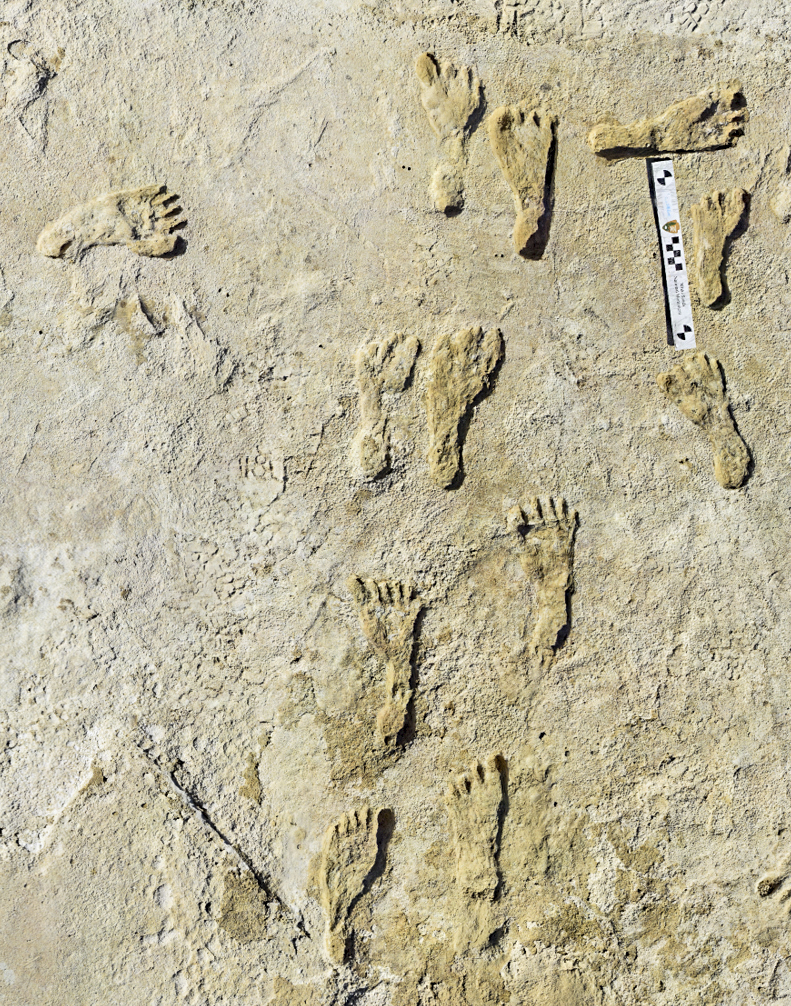Five Breakthrough Signs of Early Peoples in the Americas
A lot of ink has been spilled in archaeological debates about the human occupation of the continents known today as North and South America. When did people arrive? Where did they first settle? How did they get there?
For a large portion of the 20th century, the best answers to these questions were largely based on stone spearpoints named after a site where they were found near Clovis, New Mexico. That type of stone tool became known as a Clovis point, and the general consensus was that the people who made them had most likely arrived at the northwest tip of North America around 13,000 years ago, during the last ice age, by way of Beringia, a large land bridge that once connected present-day Asia and North America.
In the past two decades, though, archaeological finds have not only pushed the arrival time back by thousands of years but added details to the complex picture of exactly how people arrived and spread—probably multiple times via multiple routes. Some have been highly controversial, such as a possible 130,000-year-old site in California. Meanwhile, Native American oral tradition has been both studied and ignored. The migration of Paleolithic groups into the Americas is one of the more contentious debates in archaeology, and each new find shifts that debate in one direction or another.
Here are five examples from the archaeological record of the materials left behind by some of the earliest people living in North and South America.
Listen to our podcast about the 130,000-year-old site in California: “The Mastodon in the Room.”
1. Footprints in New Mexico
A group of fossilized footprints was preserved on the shore of an ancient lake in today’s White Sands National Park, New Mexico. Some of the footprints were made in a layer of ancient sediment containing the seeds of an aquatic plant—organic remains that could be carbon-dated. Recent research revealed that the footprints were made between 21,000 and 23,000 years ago, probably over a period spanning a few thousand years.
The footprints—most likely made by groups of children and teenagers—suggest that people arrived in this area much earlier than previously thought, at a time when massive ice sheets probably completely blocked access from the north. It’s not clear how these people came to North America. Did they find a way in before the ice sheets completely blocked passage southward? Did they travel south along the Pacific coastline and then move inland? Researchers will have to find more evidence before any of these questions get answered.
2. Radiocarbon dates in Idaho
The archaeological site of Cooper’s Ferry, Idaho, sits in a valley at a bend of the Lower Salmon River. This would have been an excellent place to live, with resources close at hand. Excavations at the site have uncovered evidence of hearth fires, animal butchery, and stone toolmaking, the earliest of which were dated in 2019 to around 15,000–16,000 years ago.
This find supports the idea that the first people who traveled over the Beringia land bridge moved down the Pacific coast, probably in boats, following the rich hunting and fishing grounds of the kelp forests just off the coastline. Ice sheets covered most of the North American continent at this time; only once people reached the mouth of the Columbia River (some 300 miles northwest of the Lower Salmon River) would they have been able to move inland.
3. Ancestral human genomics in Alaska
A young girl’s remains were found during archaeological excavations of a burial in present-day Alaska within a hearth feature dating back 11,500 years. A community now called Upward Sun River, in central Alaska, named the girl, who was about 3 years old at the time of her death, Xach’itee’aanenh T’eede Gaay, which loosely translates to “Sunrise Girl-Child.” (Another child was also found, an infant the community named Yełkaanenh T’eede Gaay.)
With permission from the local Indigenous community, researchers sampled the remains for genetic material. Their analysis, published in 2018, showed that while Xach’itee’aanenh T’eede Gaay was related to contemporary Indigenous peoples, she was part of a previously unknown lineage that split from modern Native Americans about 20,000 years ago. This suggests that her group lived in isolation in Beringia, Siberia, or North America for a long time, crossing the land bridge to North America earlier than thought and over a much longer time span than previously assumed.
4. Stone tools in the Channel Islands
Archaeologists have uncovered ancient implements such as barbed stone points that were used for hunting and fishing on what is today known as Santa Rosa Island in the Channel Islands, off the coast of California, some 8,000–13,000 years ago. These tools were made from local stone and are of a shape that is distinctive to the region, and they are totally different from Clovis points.
Other ancient objects from the Channel Islands include some of the oldest basketry from the Pacific coast of North America and crescent-shaped arrow tips thought to be specifically made for waterfowl hunting, as the half-moon–shaped tips would skip and skim across the water to their targets.
5. Fossilized feces in Oregon
Much of human behavior in the Paleolithic was quite different from anything you or I might do today, but at least one thing remains consistent—everybody poops. In 2008, human coprolites, or fossilized feces, found at the site of Paisley caves in Oregon were radiocarbon dated to 14,300 years ago. That is astonishingly old.
The sample also provided DNA that matches genetic patterns common to present-day Indigenous peoples in the Americas and some inhabitants in Eastern Asia. Ancestral populations likely used the Beringia land bridge to travel east to new territories, but more than 1,000 years before the appearance of Clovis technology.


































